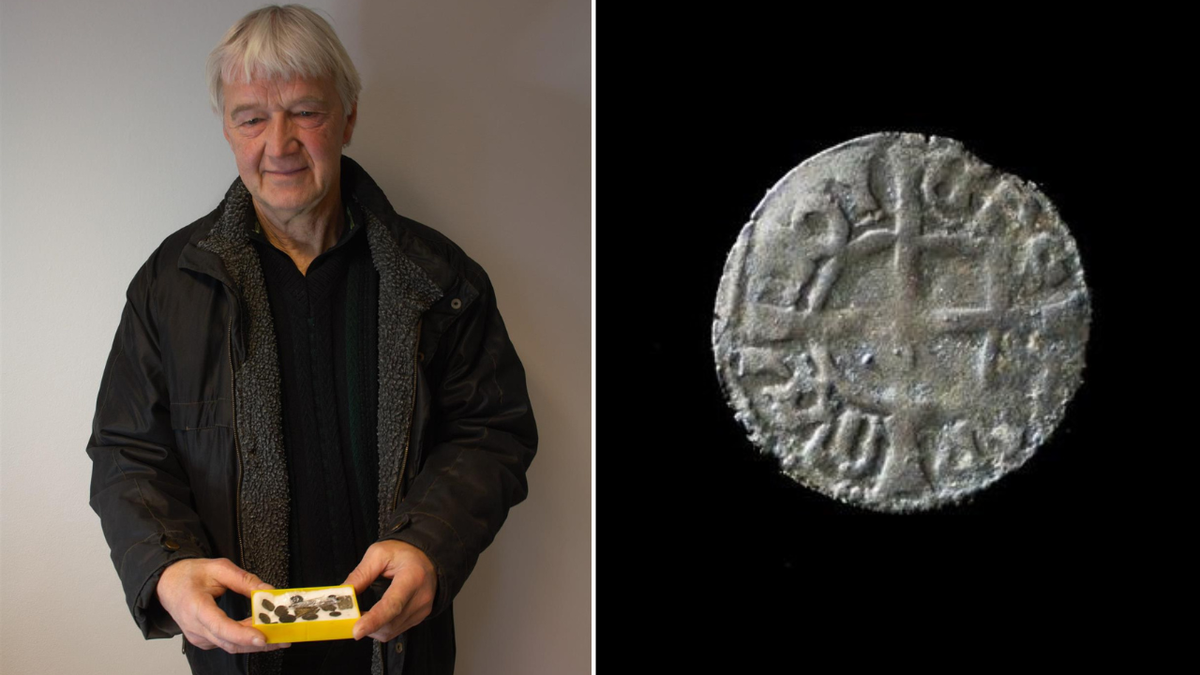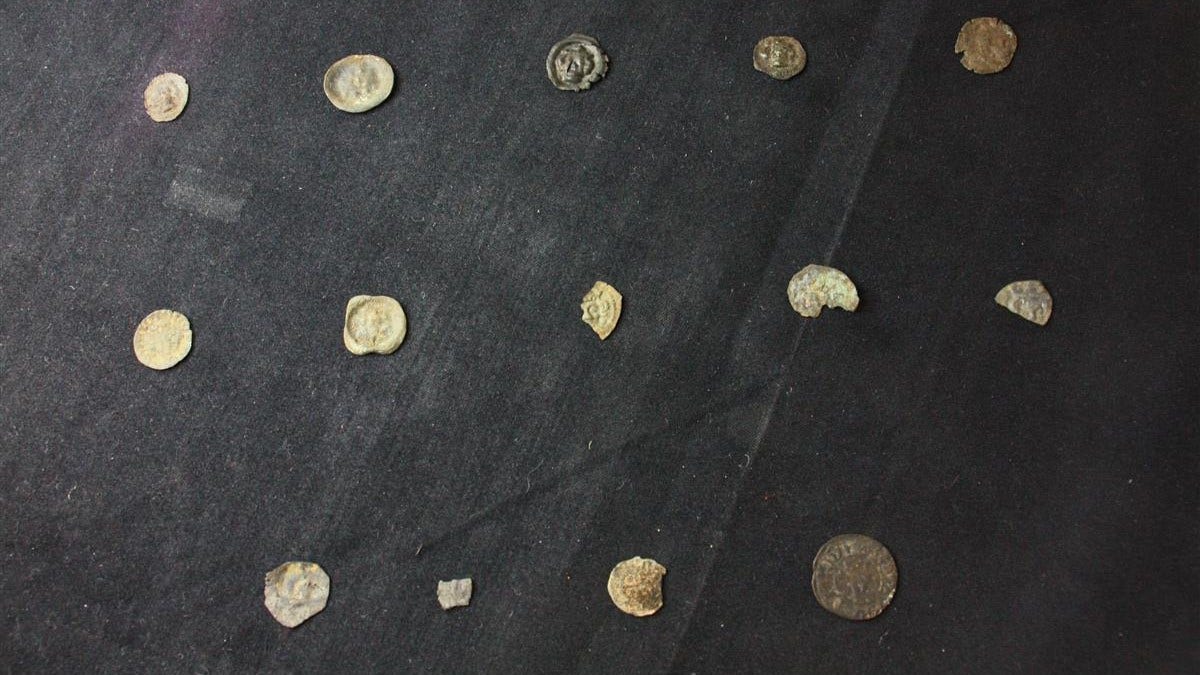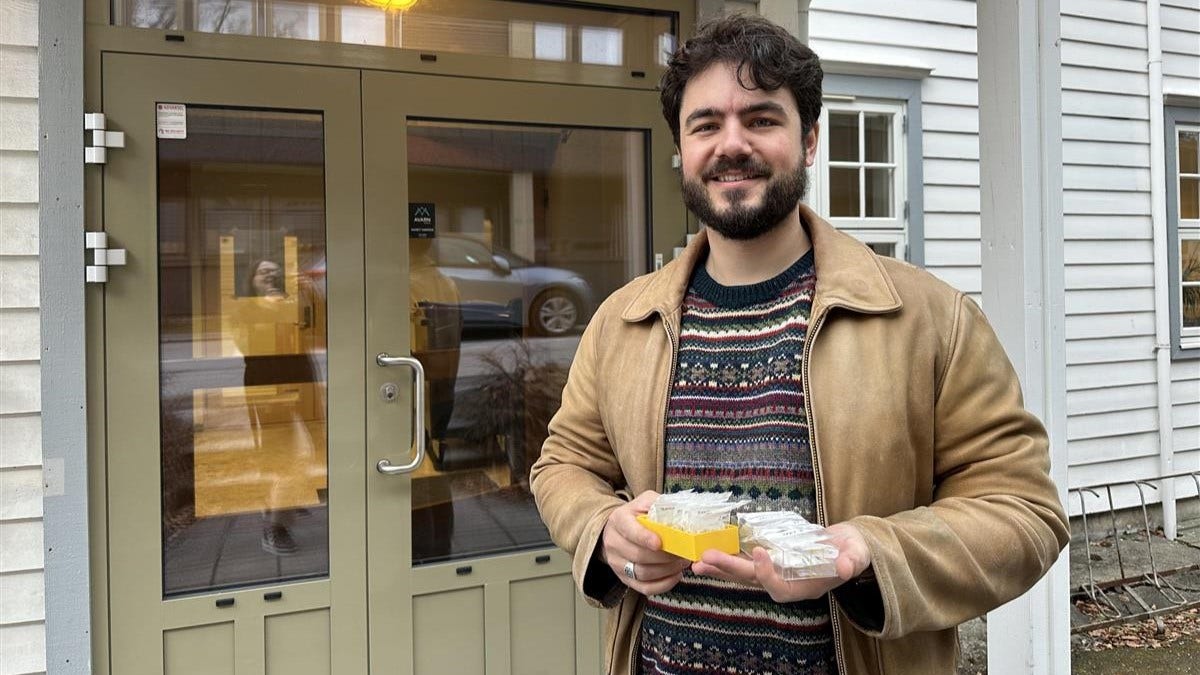Fox News Flash top headlines for March 14
Fox News Flash top headlines are here. Check out what's clicking on Foxnews.com.
A Norwegian man recently came forward to disclose that he had found several medieval coins as a child and hid them for six decades – until now.
Jan Gunnar Fugelsnes told Møre og Romsdal County Municipality officials that he and his brother were adventuring under the floorboards of Edøy Church in 1964 when he found the coins.
The boys had crawled under the church's floor, which was hollowed out by Nazi soldiers as a place to store ammunition during World War II. Fugelsnes, who described his underground venture as a "treasure hunt," brought 14 silver coins home.
"He packed them neatly in a yellow Kodak slide box, and there they lay until autumn 2023," the county's website explained.

Jan Gunnar Fugelsnes told officials from Norway's Møre og Romsdal County Municipality that he and his brother found ancient coins on a "treasure hunt" when they were children. (Carl-Fredrik Wahr-Hansen Vemmestad /Møre og Romsdal County Municipality)
Fugelsnes said that he had no idea how old the coins were at the time. Archeologists believe that the coins were from the Middle Ages, according to a press release that was translated to English.
"We were just children on a treasure hunt under the church, we didn't realize how rare the coins were," Fugelsnes explained. "In addition, we found three fittings, an amber pearl and nine needles that day."
"I think the coins may be from the collection that may have merged with the church sometime in the past," he added. "After all, Edøy Church has burned several times."
Carl-Fredrik Wahr-Hansen Vemmestad, who serves as a county archaeologist for Møre og Romsdal, said that some of the coins date back to the thirteenth century.
ARCHAEOLOGISTS UNCOVER HOARD OF ANCIENT SKELETONS PART OF 'COMPLEX FUNERARY SYSTEM'

Some of the coins are believed to originate from the reign of Magnus VI in the 13th century. (Carl-Fredrik Wahr-Hansen Vemmestad /Møre og Romsdal County Municipality)
Some of the coins may have originated from the reign of Magnus VI, who was King of Norway until 1280. A "newer" coin in the collection dates to the reign of Christian I, who ruled Norway from 1450 to 1481.
"The discovery site and the composition of coins and objects suggest that they may originate from a burial mound that was placed under the church floor in the Middle Ages, between approx. 1200-1300," Vemmestad said.
The needles are believed to be from the 13th century, and may have been part of a corpse's clothing. The amber bead was likely from a prayer wreath. Vemmestad called the items "incredibly rare."
CLICK HERE TO SIGN UP FOR OUR LIFESTYLE NEWSLETTER

The coins now belong to the Norwegian government, thanks to the country's Cultural Heritage Act. (Carl-Fredrik Wahr-Hansen Vemmestad /Møre og Romsdal County Municipality)
"Elsewhere in Central Norway, there are literally only a handful of such coins that have survived to our time," Vemmestad said. "The coins give a unique insight into the Middle Ages in Edøy."
In Norway, any coins that were produced before 1650 are considered government property – unless they were privately owned before 1905.
As such, Fugelsnes surrendered the coins to the Møre og Romsdal County Municipality, where they will be preserved for years to come.
"We are very happy that Jan Gunnar let us take over these coins, so that they can be preserved in a safe way and secured for the future," Vemmestad said.
CLICK HERE TO GET THE FOX NEWS APP

Archaeologist Carl-Fredrik Wahr-Hansen Vemmestad, holds up the medieval coins in a picture released by the county government in Norway. (Carl-Fredrik Wahr-Hansen Vemmestad /Møre og Romsdal County Municipality)
Fox News Digital reached out to the Møre og Romsdal County Municipality for comment.
For more Lifestyle articles, visit www.foxnews.com/lifestyle.


